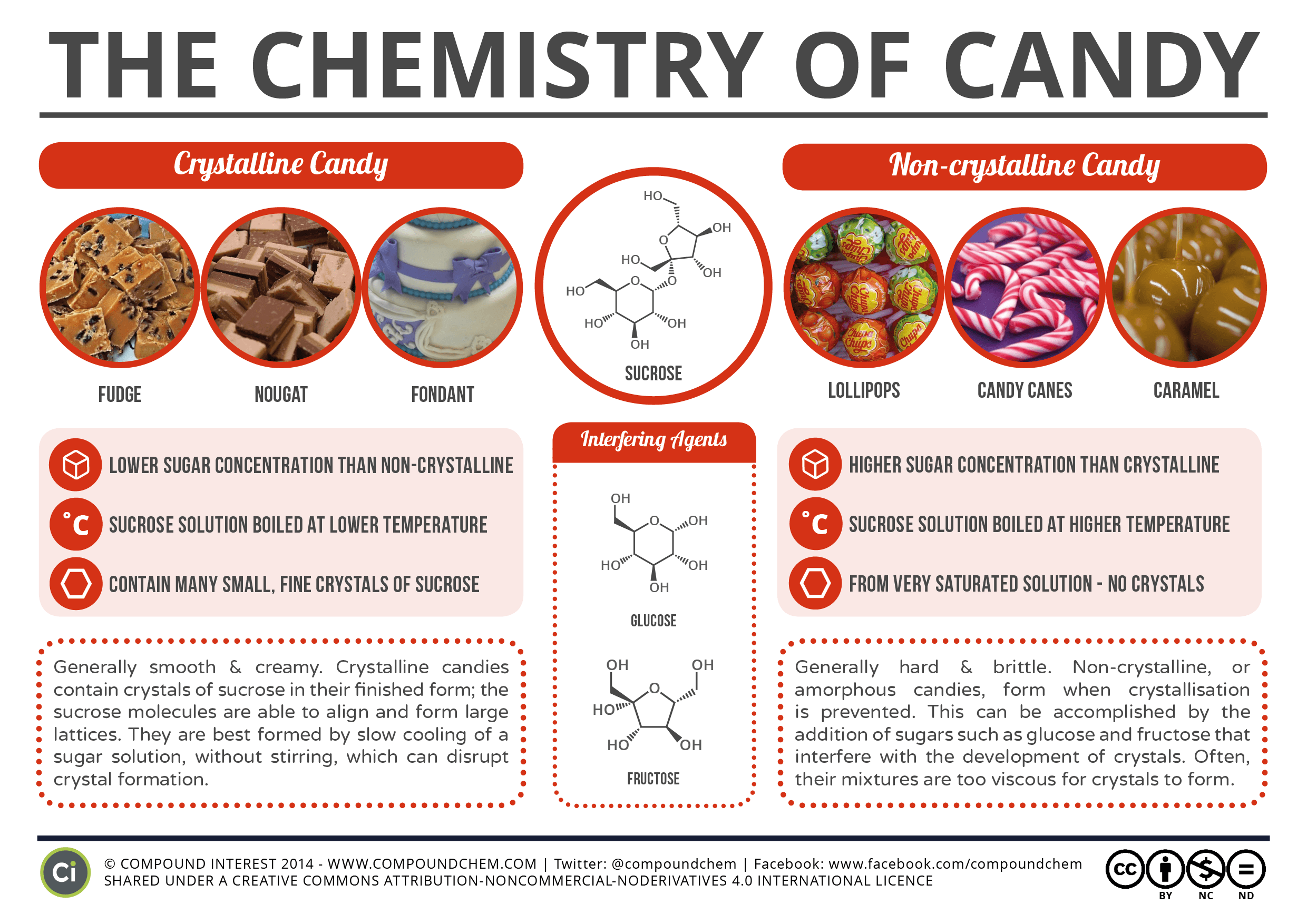Compound Interest's original post on Xylitol Gum can be found here. Compound Interest's original post on the Chemistry of Candy can be found here.
For more information about how sugar is making its way into many of the foods you eat (and some that you least expect) check out this TedEd talk!
Some fun facts about candy from the American Chemical Society are
- Hard candy is technically a glass — so much so that it is sometimes used to make the “bottle” that gets broken over someone’s head in a fight scene.
- The same chemical that makes grapefruit taste sour — citric acid — is in sour-tasting candy.
- Peppermint oil comes from a plant, and some research shows that candies flavored with it can help people concentrate better.
- Ever wonder how they get liquefied cherries into a chocolate-covered cherry without leaving an injection hole? The candy actually starts with a hard cherry center that slowly softens after the chocolate is applied, thanks to a chemical called invertase that’s added to the recipe.
- Cotton candy is almost pure sugar that has been melted and then spun.
- Gummies contain flavor, sugar and a seaweed chemical called carrageenan, which makes them chewy.
- Licorice contains a smelly compound that’s found in a spice called anise.
 For more information about candy in the United States, check out the National Confectioner's Association.
For more information about candy in the United States, check out the National Confectioner's Association.
MsJ's favorite non-crystalline candy is probably the unlikely nerds rope. Mrs. Woodward's favorite candy is the cow tale.










No comments:
Post a Comment